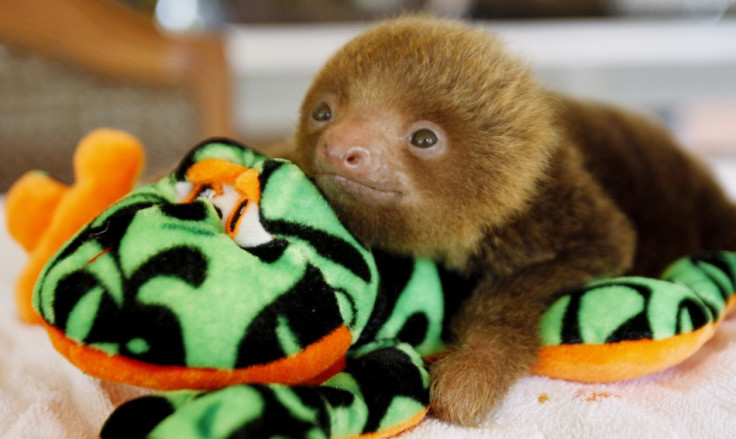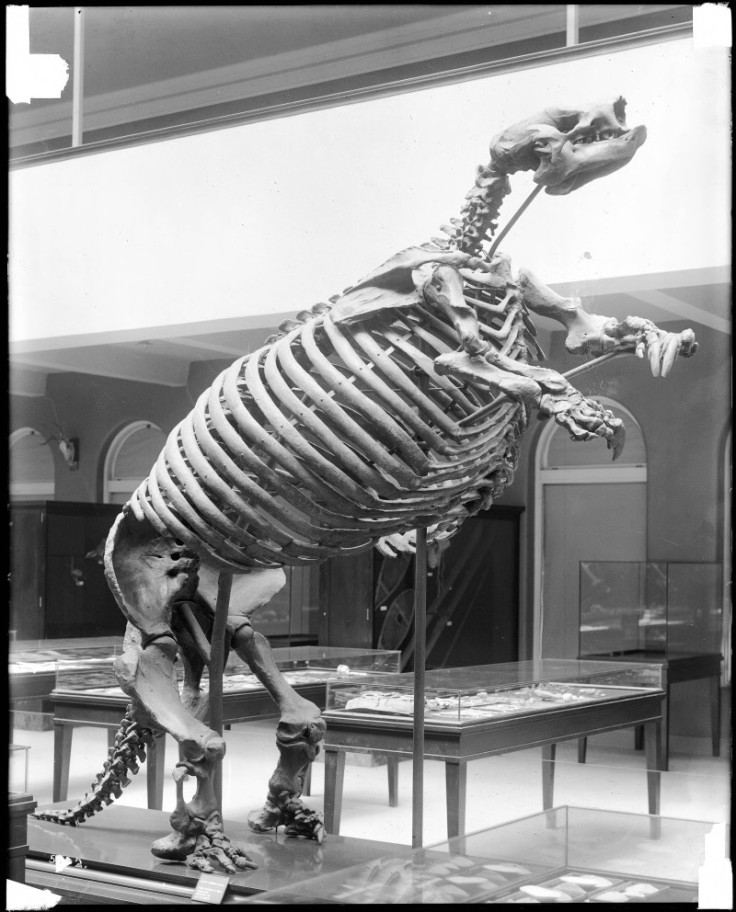Weekly potty sessions and giant ancestors: Facts about the world's slowest animal to mark International Sloth Day
The tree-dwelling mammal is celebrated each year on 20 October.
The world began to take a renewed interest in sloths following the success of the Ice Age films, which featured Sid, the needy and comically stupid of the three lead characters. The Croods included a cuddly version of the animal and Zootopia cracked us up with the hilarious DMV employed sloth, ironically named Flash.
Kristen Bell's meltdown on seeing a sloth for the first time in real life added to the interest and had people turning to Google to find out more about the world's slowest animal.

Each year, 20 October is marked as International Sloth Day, a time to learn more about these slow yet interesting mammals and increase efforts towards their conservation.
Keeping this in mind, IBTimes UK brings you some interesting facts about these furry tree dwellers.
Sloths go to the loo only once a week
These animals are best known for being very slow and the same goes for their digestive systems. Sloths have a very low metabolism rate and take a long time to digest the food they consume. They most often take about a week to urinate and defecate, and tend to use the same spot more than once, making them an easy target for predators.
They can camouflage with their tropical environment
These creatures spend most of their time hanging from trees and since they do not pay any special attention to grooming, their fur becomes a micro-habitat of sorts. Algae are known to grow on these animals, turning their coats a shade of green. They do not mind though, as the colour makes it easier for them to hide from predators.
Sloths used to be the size of elephants

Most sloths are as big as a medium-sized dog, but this was not always the case. Millions of years ago, South Africa had sloths the size of elephants. Based on fossils found from the time, the Megatherium species would have grown to be over 8,000lbs or 3,600kgs.
Sloths continue to hang on trees even after they die
Sloths spend most of their lives suspended from tree branches and are not willing to let go even after they die. According to the National Geographic, these animals have such a strong grip that sometimes, they can be found hanging from trees even after they die.
They are clumsy on land but make for great swimmers
Sloths do not have the body structure for land travel. They are pretty clumsy when walking on the ground thanks to their weak hind legs and long claws on their front appendages. While they look awkward trying to move around, they are pretty good swimmers and can move almost three times faster than they do on land. They can even hold their breath under water for up to 40 minutes.
Three-toed sloths can turn their heads almost all the way around
While most mammals (including humans) have seven vertebrae, the three-toed sloth has 8 or 9 which allows it more movement on the neck and it can turn its head around up to 270 degrees.






















